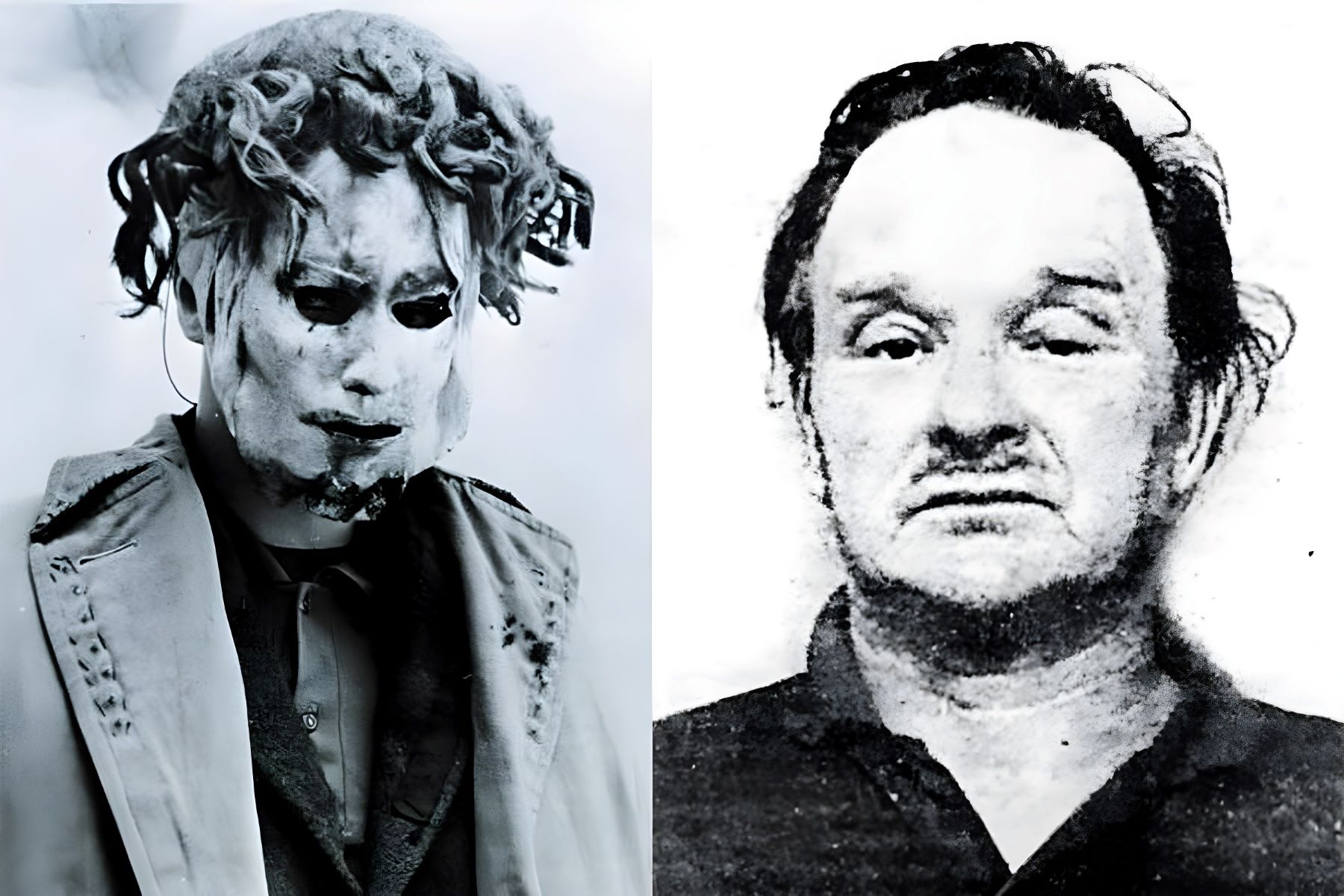
Who was Edward Paisnel, and why did he become known as the Beast of Jersey? Edward Paisnel, born on May 7, 1925, led a double life that horrified the Channel Island of Jersey from 1957 to 1971. By day, he appeared as a family man, even dressing up as Santa Claus for foster home orphans. By night, he transformed into a masked predator, committing over a dozen rapes and assaults. His reign of terror left the island's residents in constant fear, with many sleeping with guns under their pillows. The discovery of his secret room, filled with wigs, old clothing, and a satanic shrine, only added to the chilling legacy of the Beast of Jersey.
Key Takeaways:
- Edward Paisnel, the Beast of Jersey, led a double life, blending in as a family man while committing heinous crimes. His story reveals the complexities of human psychology and the potential for dark secrets behind a facade of normalcy.
- Paisnel's crimes left a lasting impact on the community, instilling fear and mistrust. His capture and trial brought some closure, but his release reignited old fears, highlighting the long-lasting trauma caused by his atrocities.
35 Facts About Edward Paisnel: The Beast of Jersey
Edward Paisnel, also known as the Beast of Jersey, was a notorious figure whose crimes left a lasting impact on the Channel Island of Jersey. His story is both chilling and complex, revealing the dark side of human nature. Here are 35 key facts about Edward Paisnel.
Early Life and Background
Understanding Paisnel's early life provides insight into how he managed to lead a double life.
- Birth and Early Life: Edward Paisnel was born on May 7, 1925, though the exact location of his birth remains unclear.
- Family Background: He came from a wealthy family, which allowed him to maintain a facade of normalcy while committing his crimes.
- Early Incarceration: At 14, Paisnel was briefly imprisoned for stealing food to help starving families during World War II.
Family and Public Persona
Despite his heinous acts, Paisnel managed to present himself as a family man and community member.
- Marriage and Family: Paisnel married Joan, and they had children together. He even dressed up as Santa Claus for foster home orphans at Christmas.
- Public Suspicion: Initially, suspicion fell on Alphonse Le Gastelois, an eccentric agricultural worker. Despite being cleared, Le Gastelois faced public backlash and lived in self-imposed exile for 14 years.
Modus Operandi
Paisnel's method of operation was both calculated and terrifying, making him a master of disguise and deception.
- Modus Operandi: He attacked at night, often targeting bus stops and isolated fields, using a scarf or mask to conceal his identity and a rope to subdue his victims.
- First Attack: The first recorded attack occurred in early 1957 when he approached a young woman waiting for a bus, tied a rope around her neck, and raped her in a nearby field.
- Victim Descriptions: All victims described their attacker as having a "musty" stench, a distinctive hallmark of his crimes.
Targeting Children
Paisnel's shift in focus to children marked a disturbing escalation in his criminal behavior.
- Targeting Children: In 1960, on Valentine's Day, a 12-year-old boy was sodomized by Paisnel in his bedroom, marking a shift in his targeting.
- Resurgence of Attacks: Between April and November 1963, he resumed his attacks, raping and sodomizing four children he had snatched from their bedrooms.
Island Fear and Community Impact
The small size of Jersey made the islanders particularly vulnerable, leading to widespread fear and mistrust.
- Island Fear: Jersey's small size (9 miles by 5 miles) made residents particularly vulnerable, with many going to sleep with guns under their pillows.
- Community Reaction: The community's reaction was complex, with some residents deeply affected while others focused on catching the perpetrator.
Capture and Evidence
Paisnel's eventual capture revealed the extent of his planning and the dark secrets he kept hidden.
- Capture: On July 17, 1971, Paisnel was stopped by police after running a red light and attempting to evade pursuit. In his car, they found several pointed sticks and elements of his "Beast" costume.
- Evidence Found: Police discovered a locked secret room in his home, which smelled of must. Inside, they found old clothing, homemade wigs, and a camera with photographs of houses across the island.
- Planned Attacks: Investigators believed he had been planning his attacks for years, choosing specific details about families and their homes to facilitate his assaults.
Trial and Conviction
Paisnel's trial and conviction brought some closure to the island, but his release years later reignited old fears.
- Trial and Conviction: He was convicted of 13 counts of rape, indecent assault, and sodomy against six victims. He was sentenced to 30 years in prison but was released in 1991 after serving 20 years for good behavior.
- Post-Release Life: After his release, Paisnel attempted to move back to Jersey but faced strong local opposition. He eventually moved to the Isle of Wight, where he died three years later from a heart attack on July 29, 1994.
Joan Paisnel’s Book
Joan Paisnel's book provides a unique perspective on her husband's crimes and their impact on the family.
- Joan Paisnel’s Book: Joan wrote a book about his crimes titled "The Beast of Jersey," ghostwritten by journalists Alan Shadrake and John Lisners.
- Public Reaction: The book received mixed reviews, with some finding it interesting for its historical policing aspect and local context, while others criticized its poor writing and repetitive content.
Popular Culture and Legacy
Paisnel's crimes have left a lasting legacy, influencing popular culture and ongoing discussions about justice and accountability.
- Popular Culture: His crimes inspired the 2017 British psychological thriller "Beast," starring Jessie Buckley and Johnny Flynn.
- Island Impact: The reign of terror inflicted by Paisnel had a lasting impact on Jersey. Many residents still remember the fear and terror they experienced during that period.
Operation Rectangle and Haut de la Garenne
Paisnel's name resurfaced during later investigations into child abuse on the island, highlighting ongoing issues within the foster care system.
- Operation Rectangle: In 2007, a child abuse investigation named Operation Rectangle began, revealing many children in foster care on the island had been abused for years. Although Paisnel was not directly involved, his name was mentioned due to his involvement in the foster care system.
- Haut de la Garenne: During the investigation of Haut de la Garenne, officers found 65 milk teeth in the basement, many belonging to older children who would have already shed them. They also discovered shackles under the dirt, attached to the walls.
Victim Trauma and Community Healing
The psychological impact on Paisnel's victims and the community's long road to healing cannot be overstated.
- Victim Trauma: Many of his victims suffered severe psychological trauma. While some details about their experiences are documented, much remains unknown due to the sensitive nature of the crimes.
- Community Impact: The fear and mistrust he instilled in the community took years to heal, and many residents still remember the terror they experienced during that period.
Legal System Challenges
The legal system faced significant challenges in apprehending Paisnel, highlighting the limitations of the time.
- Legal System Challenges: The lack of DNA testing and the dual police system run by volunteer Honorary Police made it difficult to gather evidence and identify suspects.
Paisnel’s Personality and Public Perception
Despite his heinous crimes, Paisnel's ability to lead a double life reveals the complexities of human psychology.
- Paisnel’s Denial: During his trial, Paisnel denied wearing the mask during his attacks. However, evidence found in his car and home contradicted this claim.
- Paisnel’s Personality: Despite his crimes, he presented himself as a normal family man, highlighting the complexities of human psychology and the potential for individuals to hide dark secrets behind a facade of normalcy.
Historical Context and Legacy
Understanding the historical context of Paisnel's crimes provides valuable insights into the challenges faced by law enforcement and the lasting impact on the community.
- Historical Context: The 1950s and 1960s were different times, with fewer resources available for law enforcement and less awareness about sexual crimes. This context contributed to the prolonged period during which Paisnel was able to commit his atrocities.
- Public Perception: The public perception of Paisnel was one of shock and horror. His crimes were seen as particularly heinous due to their nature and the fact that he was able to blend in with society while committing such atrocities.
- Legacy: Edward Paisnel's legacy is one of terror and fear. His crimes serve as a reminder of the darkest aspects of human nature and the importance of vigilance in preventing such atrocities from occurring in the future.
Additional Facts
Here are some additional facts that provide further insight into Paisnel's life and crimes.
- Taunting Letter: In 1966, a taunting letter appeared at the Jersey police station, chastising investigators for their inability to catch the Beast. This letter further heightened public anxiety and frustration.
- Paisnel's Mask: The rubber mask he wore was described as resembling molten skin. It was part of his "Beast" costume, which included nail-studded wristlets.
- Satanic Shrine: Police found a shrine to Satan in his home, which included an altar, a sword, and an extensive collection of books about black magic and the occult.
- Planned Attacks: Investigators believed he had been planning his attacks for years, choosing specific details about families and their homes to facilitate his assaults.
The Legacy of Edward Paisnel
Edward Paisnel, known as the Beast of Jersey, left a dark mark on the island's history. His reign of terror from 1957 to 1971 brought fear and trauma to many. Despite his seemingly normal life, Paisnel's heinous crimes revealed a sinister double life. The small community of Jersey was deeply affected, with residents living in constant fear. His capture in 1971 brought some relief, but the scars remained. Paisnel's story serves as a chilling reminder of the potential for evil within society. Understanding his actions and their impact helps us appreciate the importance of vigilance and justice. His legacy is a stark warning about the complexities of human behavior and the need for accountability. The Beast of Jersey's tale is a haunting chapter in the island's history, one that continues to resonate with those who lived through it.
Frequently Asked Questions
Was this page helpful?
Our commitment to delivering trustworthy and engaging content is at the heart of what we do. Each fact on our site is contributed by real users like you, bringing a wealth of diverse insights and information. To ensure the highest standards of accuracy and reliability, our dedicated editors meticulously review each submission. This process guarantees that the facts we share are not only fascinating but also credible. Trust in our commitment to quality and authenticity as you explore and learn with us.


